Traditional Festivities in Slavonia - Unmissable Events
7th of April 2022 - There are a lot of festivities you can visit in Slavonia - from beer and food festivals that became really popular in recent years, to modernized cultural manifestations which teach us something new. However, traditional festivities in Slavonia which are held for more than half a century, are still an irreplaceable staple of this region.
When reviewing the list of festivities in Croatia, a tourist or even a Croatian citizen, is shocked by the variety and content Croatia organizes every year for their visitors. Urban, cultural, and gourmand festivals are in forefront of most tours and offers, especially with summer coming soon and since Croatia became a really popular destination among tourists, they also got more interested in the tradition and cultural heritage of the region they visit. For instance, Dubrovnik, which is a jewel of the Adriatic coast, not only attracts visitors with its gourmand offers or beautiful historic sites like Tvrđava, they also have the Dubrovnik Summer Festival (Dubrovačke ljetne igre) which brings visitors closer to tradition and the way native people of Dubrovnik lived centuries ago. This event brings Dubrovnik back to the golden age of renaissance and baroque, the living spirit of drama and music, and many more, which were bestowed upon Croatian cultural and scholarly history. That’s why Dubrovnik is so good at tourist offers, they bring everything to everyone.
However, with different tourists comes different tastes and recent years showed an increase in interest in Eastern Croatia, more precisely, Slavonia and Baranja, which are labeled as more “rural, folk” regions. Slavonians and Baranians recognized the potential these regions have and started adapting to tourists' wishes and needs. Yes, they devised and organized multiple new festivals that will be held for many years to come but they realized their traditional festivals, which are really popular with lovers of everything related to tradition and locals, need more exposure.
Đakovački vezovi - Đakovo
Today, Đakovački vezovi is a well-known and affirmed manifestation of original folklore. The first manifestation occurred in July 1967, as part of then the International Year of Tourism and from the beginning, the event was a great success with people from Slavonia and beyond. The main event kept its original date and it’s held every year in July. Contents of the festival include original folklore from Slavonia, Baranja, Western Srijem, and other parts of Croatia with accompanying events such as the opening of various exhibitions, equestrian events, and other cultural and tourist events. The entire city participates in the event and in 2005, it received the International Tourism Charter (European Federation of Tourist Journalists based in Rome) Merits for Tourism. Thousands of folk costumes pulled from the chest of oblivion, thousands of participants from Slavonia, Baranja, the whole of Croatia, even Europe, and the world, bring us songs, dances, and customs of their homeland for decades in Đakovo. If you’re a gourmet, you’re settled. Hundreds of different dishes are served and ready for degustation. Wine lover? Multiple winemakers with their best wines are ready to show off their products which are a reflection of the beautiful, rich region of Slavonia. Artists, folk, history lovers, and even animal lovers can come and have the time of their lives which makes it one of the largest and most popular traditional festivities in Slavonia. For more details, check out their official website.
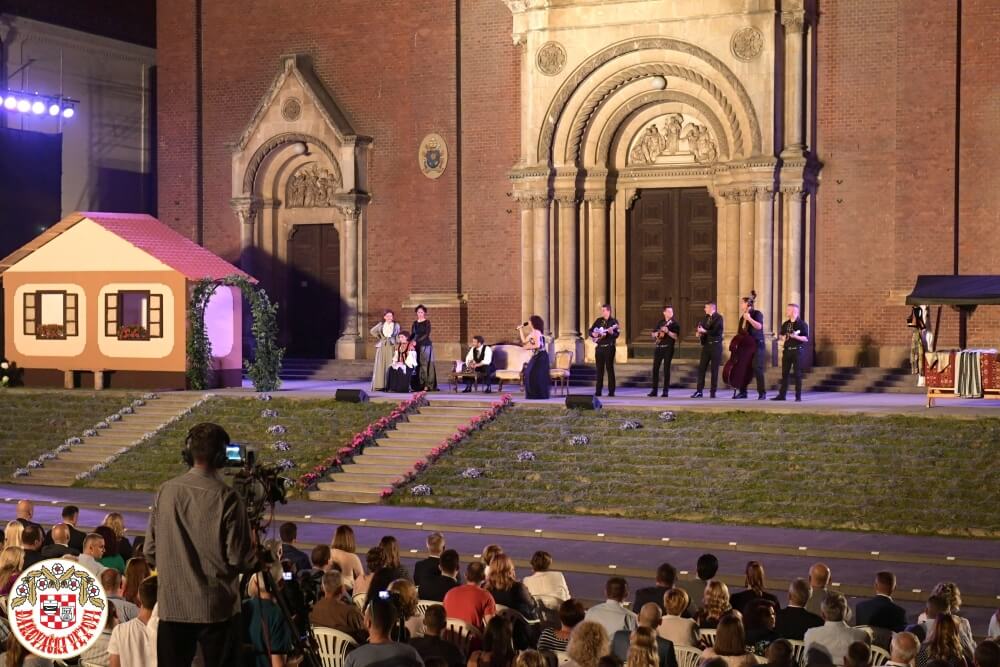
The opening of "Đakovački vezovi" in 2019 (photo credit: Photo Gallery - djakovacki-vezovi.hr)
Vinkovačke jeseni (Vinkovci Autumns) - Vinkovci
Definitely, the largest cultural event in the region, arguably in Croatia and some would say, in this part of Europe. The First Vinkovačke jeseni was organized in September 1966 and soon became one of the most famous festivals of its kind in all of Croatia. The foreground of the manifestation is the care of traditional folk dances, costumes, and customs in order to preserve various values of folk and traditional life of Slavonia. What’s really interesting is the fact that the manifestation is organized in September because of autumn - a season that rewards Slavonians for their hard work. After its founding, the festival soon began to connect all lovers of cultural heritage, not just Slavonia, but all the regions in Croatia. So every year hundreds of Folklore Societies from Croatia, Serbia, Bosnia and Herzegovina, Slovenia, and many more come to Vinkovci to display their culture to visitors. However, they didn’t stop there. Organizers recognized the tourist potential of their event and upgraded it for modern times, so apart from the main event which signifies a closure of Vinkovačke jeseni, the whole week before the opening is dedicated to its visitors! For instance, the opening of the event comes with a big performance by the local theatre with other guests from all over Croatia and in the evening the concerts of the biggest Croatian music stars begin, every evening of the week! Personally, I watched biggest Croatian performers on Vinkovačke jeseni stage like Dino Dvornik, Severina, Jelena Rozga, Klapa Intrade, Giuliano, Prljavo Kazalište and so many more. It truly is for everyone. Then, when the show of the manifestation ends on the last day of the week with the biggest folklore parade in this part of Europe (nationally televised), with the most popular folk and traditional commentator in Croatia, Branko Uvodić, every visitor feels enriched with Slavonian tradition, cultural heritage, food, art, folklore and more. That’s why Vinkovačke jeseni is one of the biggest traditional festivities in Slavonia and one of the best representatives of Croatian traditional, cultural heritage in this part of Europe. For more details, visit their official page. If you want to read more about Vinkovci, check this TCN article.
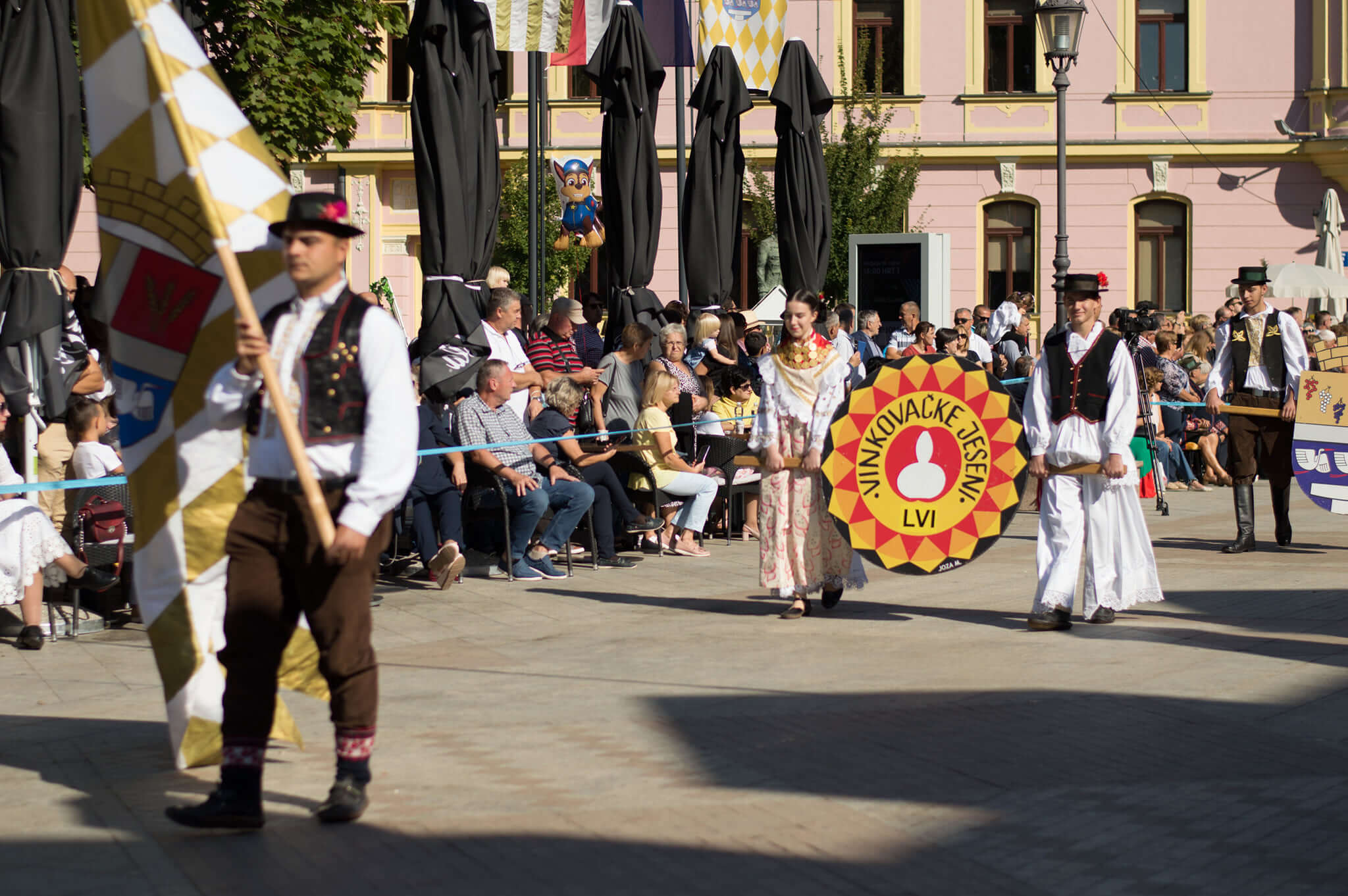
"Vinkovačke jeseni" parade - the main event on the last day (photo credit: Vinkovačke Jeseni - Facebook page)
Aurea Fest - Zlatne žice Slavonije (Golden Wires of Slavonia) - Požega
In the middle of Slavonia lies the city of Požega, located in the hilly parts of the region where none of the roads are straight - a place where hills are dotted with roads. Surrounded by the old hills of Psunj, Papuk, Krndija, Dilj, and Požeška Gora and home of the famous Croatian poet, Dobriša Cesarić, it doesn’t seem odd that this city is the home of one of the biggest traditional, cultural and musical events of folklore, tamburitza but also pop music, which has been held in Požega since 1969, with a break between 1981 and 1990. Zlatne žice Slavonije today is a four-day event with more than 40,000 visitors and more than 100 accredited journalists from several countries. Songs, top-tier wines, gastronomy events, concerts, exhibitions, art colonies, sports competitions, folklore festivals and other events are slowly making Požega and the Golden Valley one of the tourist destinations in Croatia in September. It hosted multiple Croatian musicians (mostly “tamburaši”) like Gazde, Zlatni Dukati, Miroslav Škoro, Slavonske lole and so many more. CDs and cassettes were pretty popular back in the day, which meant that almost every Slavonian household had a copy of musical repertoire from Golden Wires of Slavonia! So, if you visit Slavonia, definitely visit Požega in September - great content, songs, dances, food, and most importantly, people. The main event, the concert, is nationally televised on HRT every year. For more information, visit their official page.
For now, we’re stopping here. There are a lot of traditional festivities in Slavonia but these three events are staples of traditional festivities in Slavonia and the whole of Croatia. From entertainment to food and sports recreation, these manifestations are unmissable events if you want to visit Slavonia. Slavonian spirit cannot be recreated anywhere else, so if you want to relax further after a summer tour of the Adriatic, come to Slavonia, they’re going to welcome you with open arms.
For more, make sure to check out our travel section.
Poetry As Preservation of Slavonian Cultural Heritage and Tradition
31st of March 2022 - Meet Željko Čuljak, whose poetry and stories about the beauty of Slavonia and its residents aim to preserve the cultural heritage and tradition of his village Cerić and the whole Slavonian region.
We spoke with Željko in his home in the small village of Cerić, which is located near Vinkovci and has suffered a tragic fate. During the Homeland War, Cerić fell and was destroyed to the ground - residents lost everything and inevitably fled the enemy aggression which destroyed everything in their way. Željko, with his fellow fighters and villagers, stayed behind and helped to protect Nuštar, a nearby village that resisted tireless enemy attacks and led bloody battles that lasted for days. On the 5th of October in 1991, just a few days after surrounding villages fell to the enemy hands (Cerić and Marinci), Croatian defenders resisted enemy attacks and, in the end, managed to protect the village from aggressors. This event is forever inscribed in the history books of the Homeland War as the “Battle of Nuštar”, which was one of the biggest wins of the Croatian army in an effort to protect the country of Croatia from aggressors. Why is this event mentioned? Because its consequences left a big scar on Cerić and its surroundings - destroyed homes, displacement of the residents, destroyed the most recognizable symbol of the village, the church and so much more. The identity of the village was shattered by those buildings and still has an impact on the village's atmosphere today. However, returnees to the village and new residents made it their mission to bring back the old glory of Cerić, promote how people lived before the war, and show that their tradition, cultural heritage, and their lives were not erased on that fateful day in 1991.
Thus, join us in meeting Željko, who is at forefront of the mini “Slavonian revolution” which is propelled by his stories and poetry about the past and present and the future of Slavonia as well.
Željko, can you tell TCN readers a bit about yourself?
My name is Željko Čuljak, a folk poet and a writer, a defender of the Homeland War and a retiree, who in their free time raises pigeons and writes stories about Cerić and Slavonia. I am a father of three children, a grandfather, and a husband. My writing is connected to the exile of our village, ten years of watching my village from the frontlines. To understand my writing and me in general, you need to see where I live.
What is Cerić? If you look at it as an outsider it seems like any ordinary Slavonian small village, so what is so special about it to you?
We live in Slavonia, a rich and “full” region that through time attracted a lot of conquerors and consequently, misfortunes. People who lived here suffered a lot during a few wars that happened in this region and after those casualties, the number of residents rapidly decreased which led to people all over the country migrating to Cerić. In the beginning, a lot of conflicts occurred between immigrants and the old residents, who felt threatened by the newcomers. However, after some time, harmony and love prevailed and connected these different groups. Love won in the end and those newcomers accepted the village's customs and cultural heritage and traditions of this region. In conclusion, calm people live here.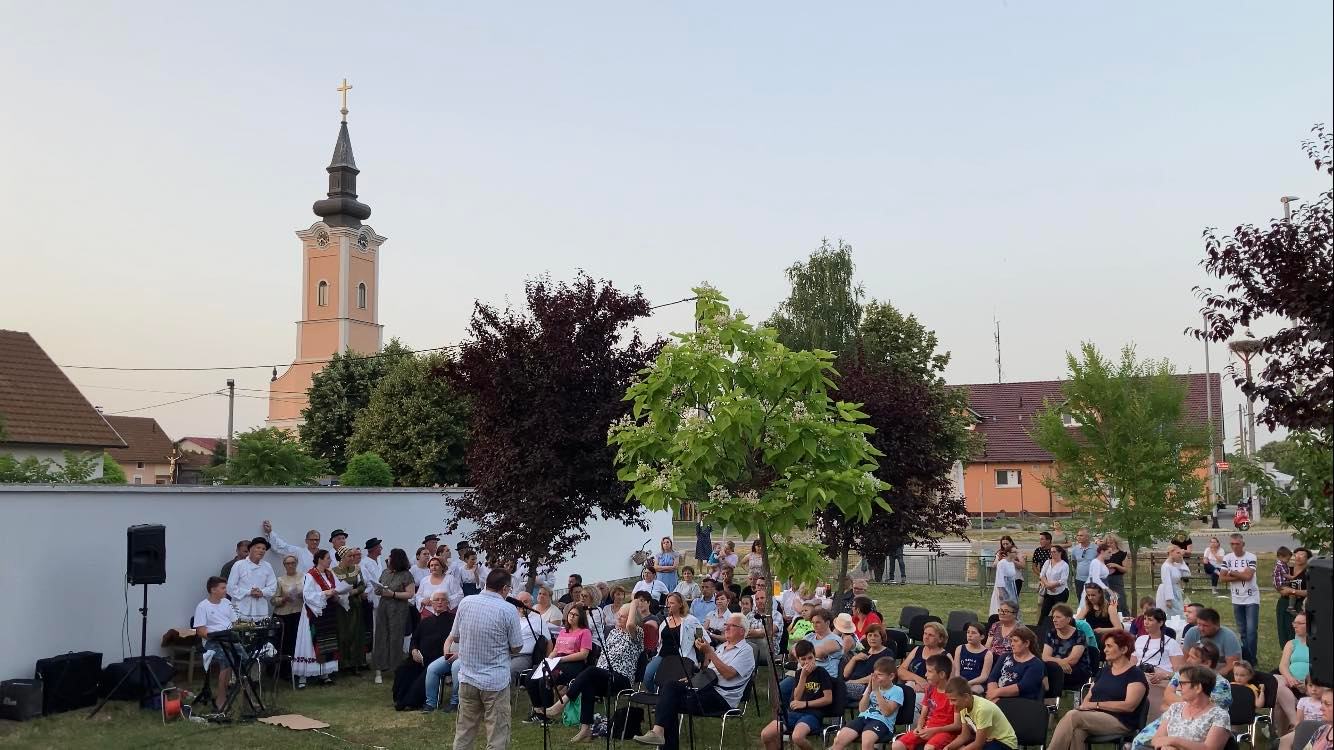
"Evenings with Poetry" in Cerić, (photo credit: Vedran Čuljak)
When did you discover your passion for writing?
I don’t talk much, a lot of the things I prefer keeping to myself and we were taught “if you don’t have anything nice to say, it’s better for you to be quiet.” I endured the war better while I was in it than when I came back to destroyed homes and a neglected village, it fuels the anger in you. That site slowly but surely built up anger and rage in me and I couldn’t express it to others nor me. Then, one time at the mass, I heard a priest talking about anger and saying: “Love your enemies, forgive!” How can I do that?! I realized that I need to forgive myself to let go of that anger. When I’m surrounded by so many good people, how can I be angry?! And those experiences fueled my inspiration for writing. Firstly, I started writing for myself. I write about the beauty and happy adventures of our lives and their residents. I felt sorrowful for not sharing my work with anyone, so I started gifting and selling my work to family and friends. When they liked and praised my work, I felt like I was doing something right. Also, I am part of the Folklore Society of Cerić "Slavko Mađar" and they always need new ideas or “old” ideas I realized that war kind of erased part of our history, people who “disappeared” from this place took the tradition and cultural heritage with them. Today, I’m sort of a keeper of memories in Cerić, one of the people who bring those old stories and memories back to residents and it, unfortunately, seems that people forgot most of them. I try my best to save and preserve that cultural heritage for children of the future. We have a very nice combination of us poets who write and the rest of the village who “absorb” everything we make. We give our poetry soul and actors from Folklore give them life.
Željko, do you think there are enough of these initiatives that have the mission of preserving and promoting Slavonian cultural heritage?
Folklore Societies are keepers of tradition and it’s well represented, not just in our region but throughout all of Croatia. Every village and town have their own Folklore Society. The question is, are people aware of them? Once upon a time, people were actually running away from tradition and it was an embarrassment to even be connected to these groups because everything else foreign was better. Then we realized during War that we miss sitting under the old mulberry tree while the spring sun is shining, harvesting our own crops and so many more things that make this region unique. Simply, all of the residents of Cerić realized that that’s the point - it’s nice to go abroad to a beautiful country or city but in the end, there is no place like home.
Do you have any of your original work published?
I have a collection of poems called Trace of The Soul (Trag Duše) which came out in 2019. It’s mostly poems about the war we experienced, adventures, and traditions Cerić offered and inspired me to write about. I wrote another book of poetry expected to be published near the end of the year, it should’ve been published before but COVID-19 slowed down the process. It’s easy to write for me since there’s a lot of inspiration around me like children going back from school, the boy who’s a head shorter than the girl but still carries her bag, and those kinds of stories make my writing worthwhile. Everything is simple and lively in this village.
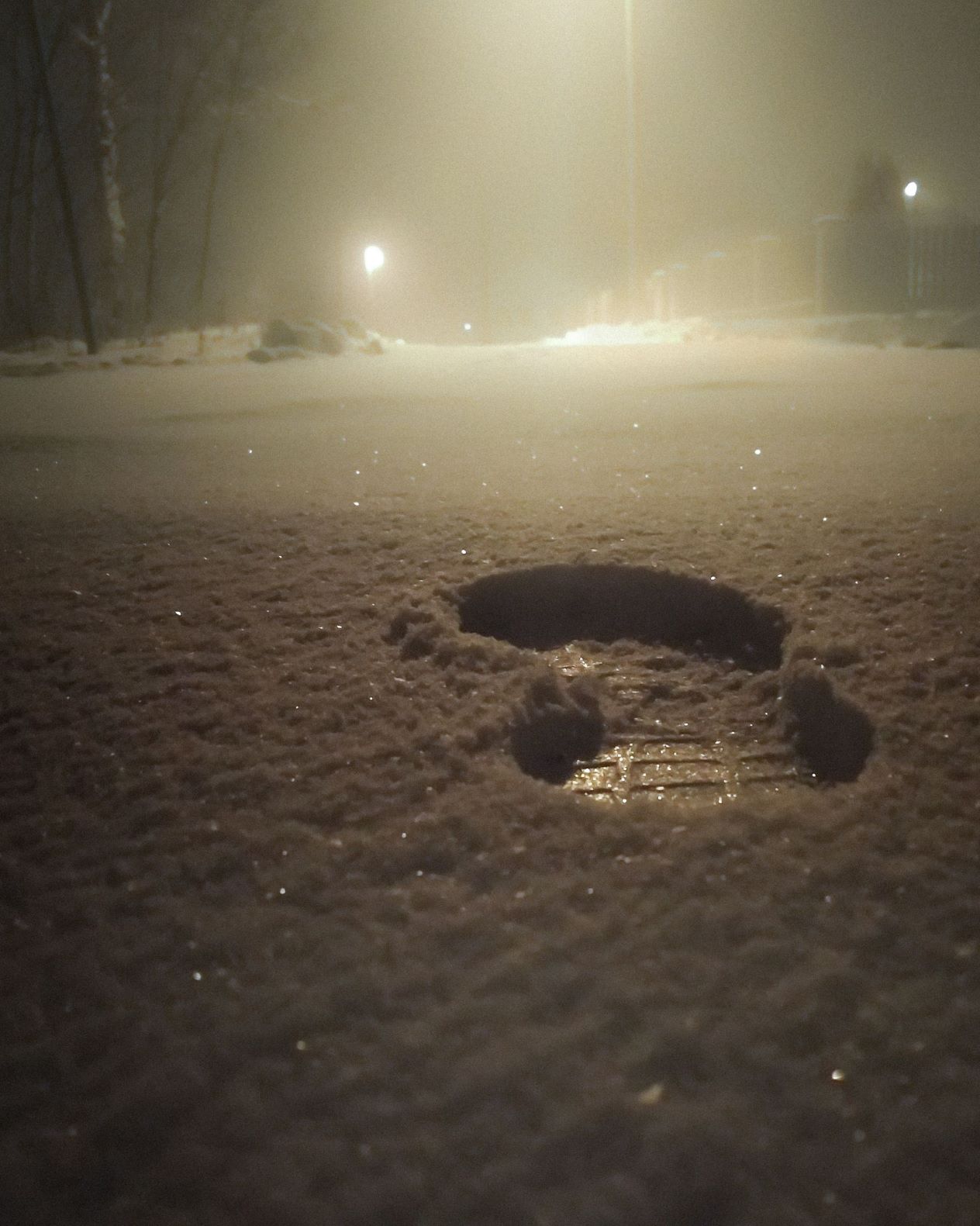
Original cover of "Pattern of the Soul" (Trag duše), Željko's published work, (photo credit: Vedran Čuljak)
Who’s your biggest critic?
My wife is my eternal inspiration to me haha AND my biggest critic of course. Everything that works and everything that doesn’t work she always tells me. She knows how to read my poem better than I! I don’t know how to interpret it when I write it! To me, it’s a blessing and brings me a lot of joy when every poem finds its own role, every person finds themselves in my poem, my story. We are extremely lucky that our whole village participates with us.
Can you tell us the events or manifestations that you organize every year in your village?
We have “Evening of Poetry” which is usually held during summertime at the end of June. It’s part of the celebration of our saint of the village, Ivan (John), or how we say it here, Ivanje. Usually held in the evening, residents gather and light up the torches, we sit on bales of straw in the middle of Cerić and recite our poems and stories. Residents and our guests also participate in the event and it’s such a beautiful celebration of Slavonian cultural heritage and traditions. We have one more event, the “Yearly concert of Folklore Society” which is held around Municipality Day of Nuštar. Local people criticized this manifestation since it was held on 2nd of the October which was the day Cerić fell in the Homeland War. We were accused of celebrating the biggest tragedy this village experienced in its history. What they didn’t understand is that we always celebrate life, coming back to our homes, all of those people who were exiled or have left us for other reasons and we do it with songs, socializing, being happy and that’s the most important part.
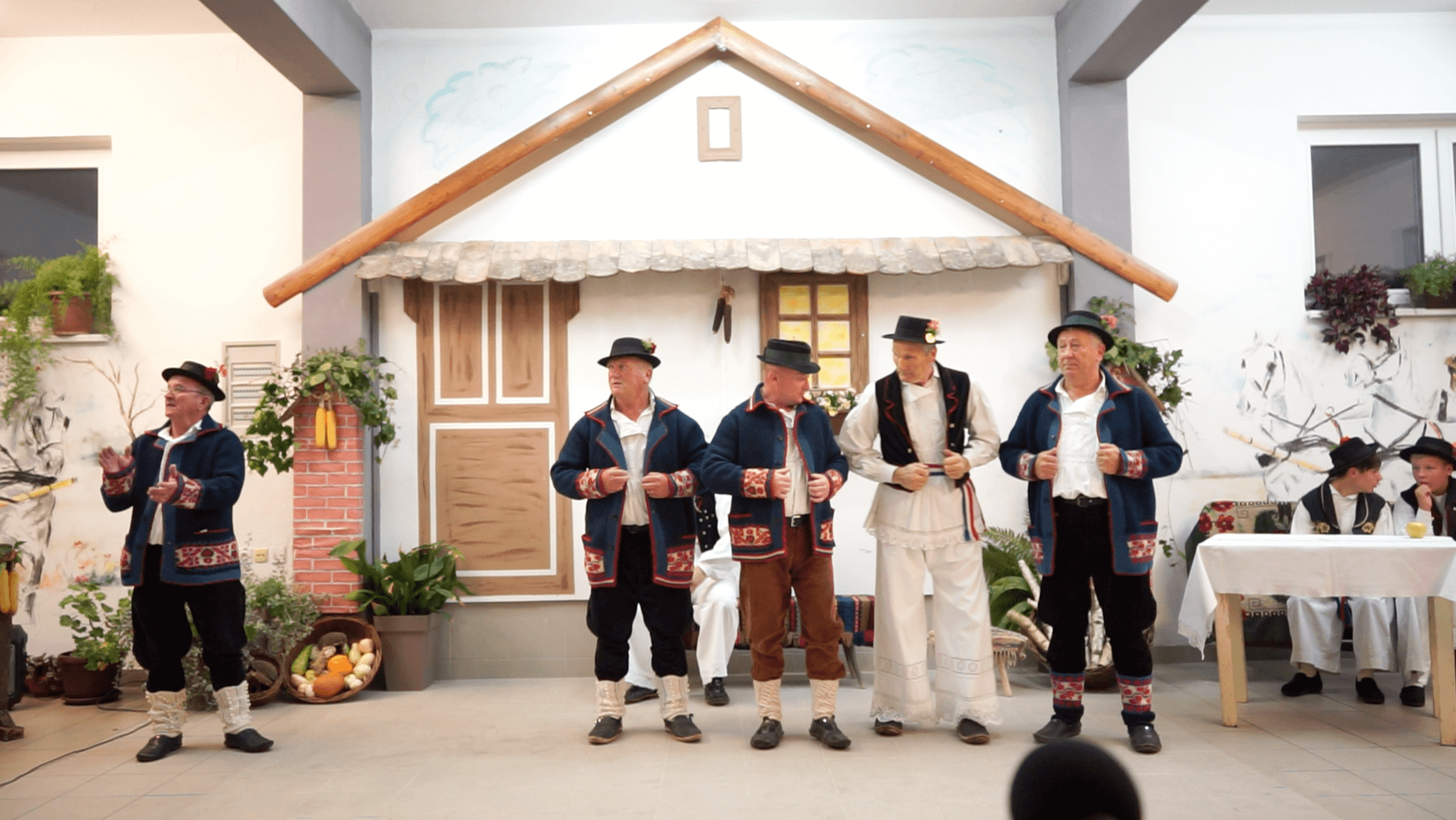
One of the manifestations celebrating the cultural heritage of Cerić and Slavonia, (photo credit: Vedran Čuljak)
As we know, Slavonia lost a lot of its residents in recent years, do you think that factor will affect your manifestations?
I don’t think so. Residents of Cerić notice our work as our guests as well. For example, we had a group of school children coming to our village as part of their trip, it was some kind of Vinkovačke Jeseni program and let’s just say the children weren’t that positive coming here. Why? Because they didn’t know what Cerić is, never heard of it and of course, they’re just not interested in those places, what can Cerić offer to them? However, after we hosted them nicely, organized nice lunch, their teacher, who was in charge, told us that this is the first time in her career that the children didn’t want to go home, they didn’t want to enter the bus and go. I know it’s a small sample but everyone who comes here, goes back home happy and they come back every year. There is still interest and to me, it seems it’s growing in the last few years.
Does that mean that there are successors and willing children to continue doing what you started? Promoting and persevering Slavonian cultural heritage?
Definitely! More and more children realized villages' worth, their traditions, and cultural heritage. Cerić and its residents are unbelievably close and connected, while other villages talk about the alienation of their residents from their heritage, we prosper every year more and more. When a child puts on our traditional folk costume (šokačku nošnju) and when you look at the photos of their ancestors in the same costumes, those children are vivid pictures of their predecessors, great grandmothers, great grandfathers, only the hair and clothes changed. Everything stayed the same. There are successors and always will be. They will never disappear!
Thank you Željko for your time! Can you recite one of your original Slavonian poems for the TCN readers?
From the poem "Slavonia, Mother"
"When I leave my homeland at dawn
I carry in my eyes a memory far from
far from the eye, to the heart, it's also hard
I will return once through tears, I said
.....
We'll meet again under the old oak
when the years close my dreamy eyes
until then I love you and always think of you
in my dream, almost every night I dream about you."
Events celebrating Slavonian cultural heritage mentioned in this interview are held in Cerić on the 24th of June "Evenings with Poetry" and the 2nd of October "Yearly Concert of Folklore Society "Slavko Mađar". If you're ever close and for instance, ever come to "Vinkovačke Jeseni", visit Cerić and their events, Slavonia, as always will welcome you with open arms.
For more, check out Made in Croatia.
Vinkovci Autumns Presents Program For Its 56th Edition, Begins in One Week!
September 3, 2021 - There is only one week left until the beginning of the 56th Vinkovci Autumns, which will shine with their old splendor this year. Once again, for ten days, the Vinkovci Autumn will bring a handful of events and show why it is the biggest manifestation of traditional culture in this part of Europe.
Yesterday, the Organizing Committee of Vinkovci Autumns officially presented the program of this year's event, reports HrTurizam. Unlike last year’s which were organized for the first time in special circumstances, the 56th edition takes on a look that everyone is already used to.
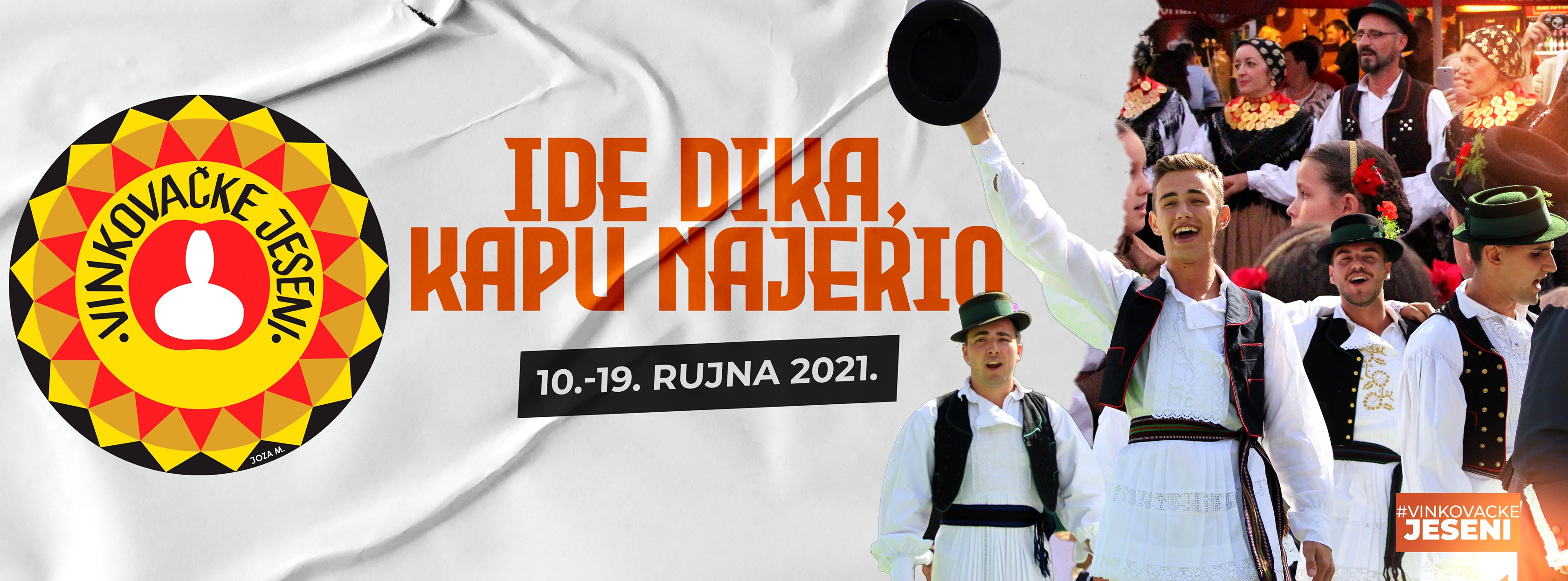
It all starts on September 10th with Folklore Evenings that will last until September 15th. 46 societies from Vukovar-Srijem County have registered, 43 will perform at the Folklore Evenings, while three societies will host the State Folklore Festival on September 18th and 19th. The first weekend is reserved for the youngest guardians of traditional culture and the Inter-County Festival of Children's Folklore Groups. 12 counties and the City of Zagreb will participate, and in the Children's Parade on Sunday, September 12, we will be able to see a total of 47 groups.
Slavonski sokak opens its doors on the first day, and as it has always been there, with the support of tamburitza players, you will find a rich offer of domestic and indigenous products of 51 exhibitors. Six winemakers this year will be at the Wine Alley where you will be able to from Monday, September 13, while the next day the main stars will be members of the Folklore Ensemble Lisinski who are celebrating 70 years of existence.
The highlight of the event begins with the grand opening on Friday, September 17th. Saturday is reserved for the National Folklore Festival, and on Sunday we traditionally go to the festive Parade in the city center. The parade of the 56th Vinkovci Autumns will be enriched by 42 local folklore societies and 28 invited societies, which are the highest ever.
Vinkovci is the oldest town in Europe, and it is located 21 km west of Vukovar, 39 km east of Đakovo, and 43 km south of Osijek.
"Thank you to everyone who contributes to Vinkovci Autumns being the biggest event in Croatia and beyond. I hope that we will all adhere to epidemiological measures and try not to endanger anyone. I think we’ve learned to live with that already. A lot is waiting for us, we had to leave something out, but everyone will have the opportunity to enjoy the rich content for all ages", said the President of the Organizing Committee, Mayor Ivan Bosančić. He stressed that there will be no tents this year and everything will take place in the open, more precisely on the stage in the city center.
For more information, visit the Vinkovci Autumns official website, or their official Facebook page.
For more, make sure to check out our dedicated travel section.
55th Vinkovacke Jeseni Folklore Festival Ends
ZAGREB, September 20, 2020 - The 55th Vinkovacke Jeseni (Autumn in Vinkovci) folklore festival, held this year in line with measures introduced due to the coronavirus pandemic, ended on Sunday in that eastern Croatian town with a parade of participants and horse-drawn carriages.
Members of 31 folklore troupes from Vukovar County and 25 horse-drawn carriages and 30 horse riders walked through the city centre.
There were no visiting folklore troupes from other parts of the country and the Croatian diaspora this year due to the coronavirus pandemic but their previously filmed performances were shown on a video wall.
The parade of folklore troupes was followed by numerous visitors.
For the latest travel info, bookmark our main travel info article, which is updated daily.
Read the Croatian Travel Update in your language - now available in 24 languages
55th Vinkovačke Jeseni Becomes Folklore Festival of the Future
September 17, 2020 – Beginning today, one of the country's largest and oldest annual folklore events - Vinkovačke Jeseni – finds new ways to continue the music, dancing and preservation of Croatian culture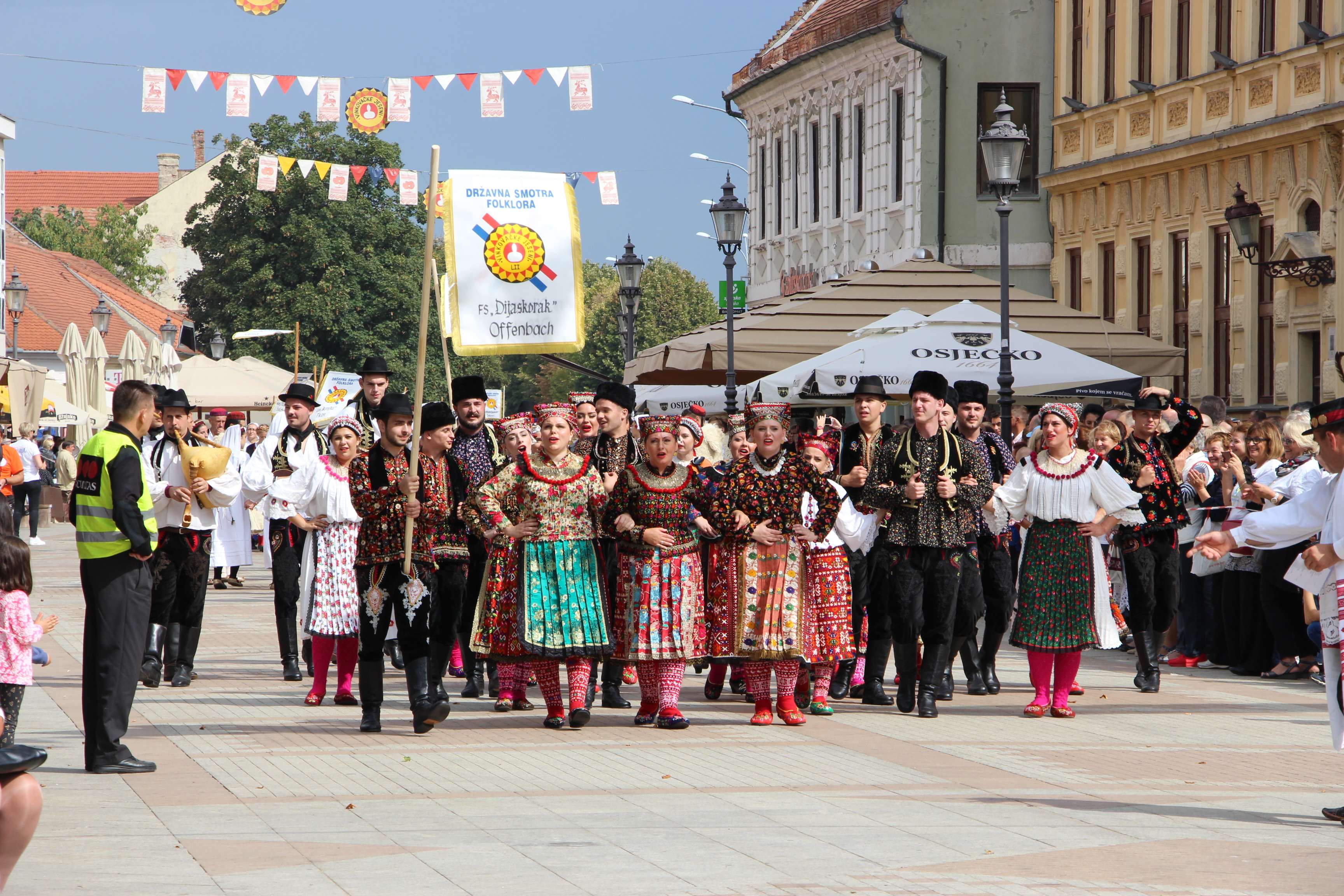
Of all events requiring a serious rethink because of epidemiological guidelines, folklore is perhaps the most problematic. The traditional folk dancing of Croatia requires participants to be in close proximity. Often, groups are joined by the hand – and hundreds can join in. But, not this year.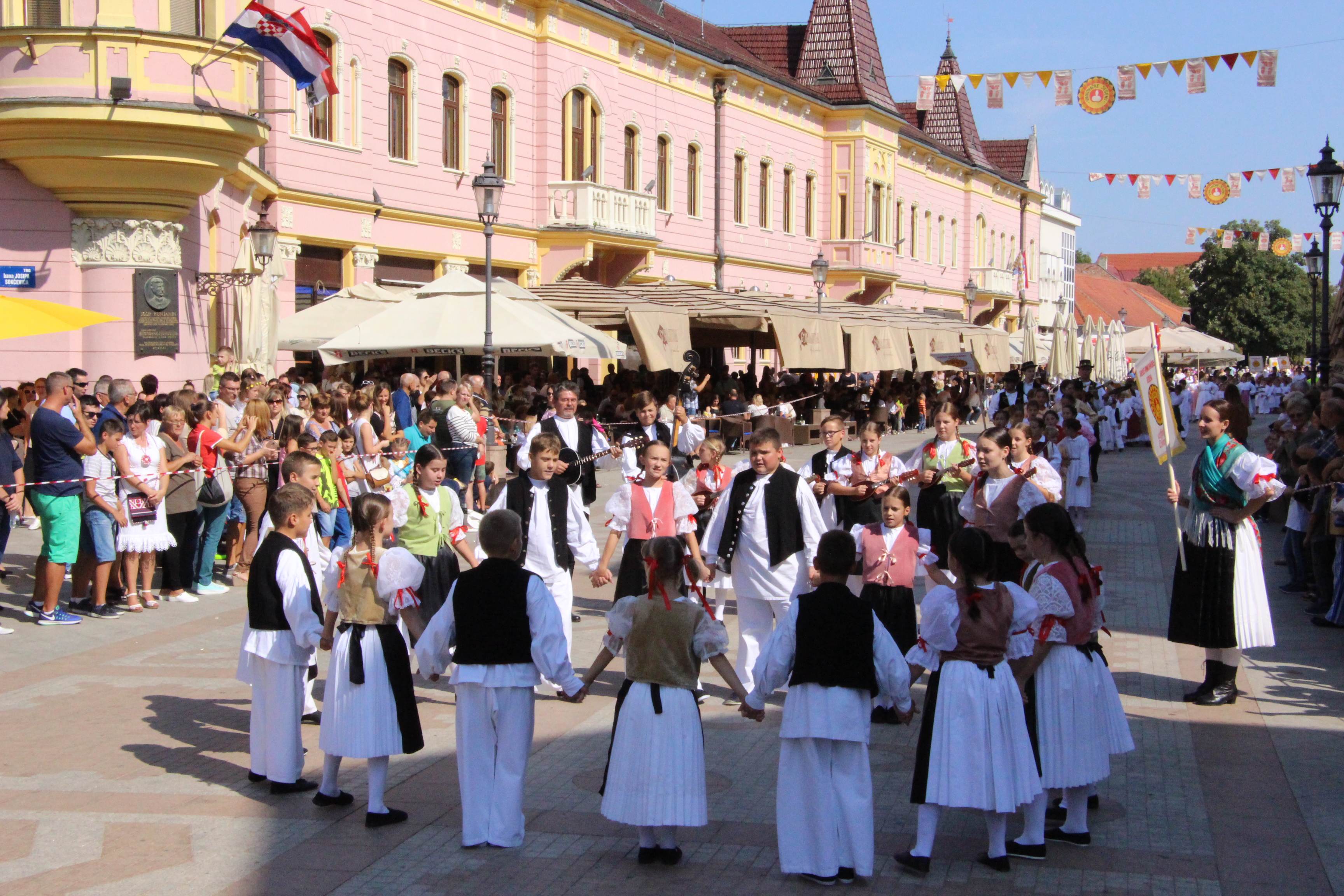
Being one of the largest traditional folklore events in the country, Vinkovačke Jeseni (Vinkovci autumn) has had a lot of thinking to do. Having been enjoyed by inhabitants of the eastern Slavonia town every year continuously for over half a century, not to mention many thrilled visitors, cancellation was a last resort. And it's one they have thankfully not reached.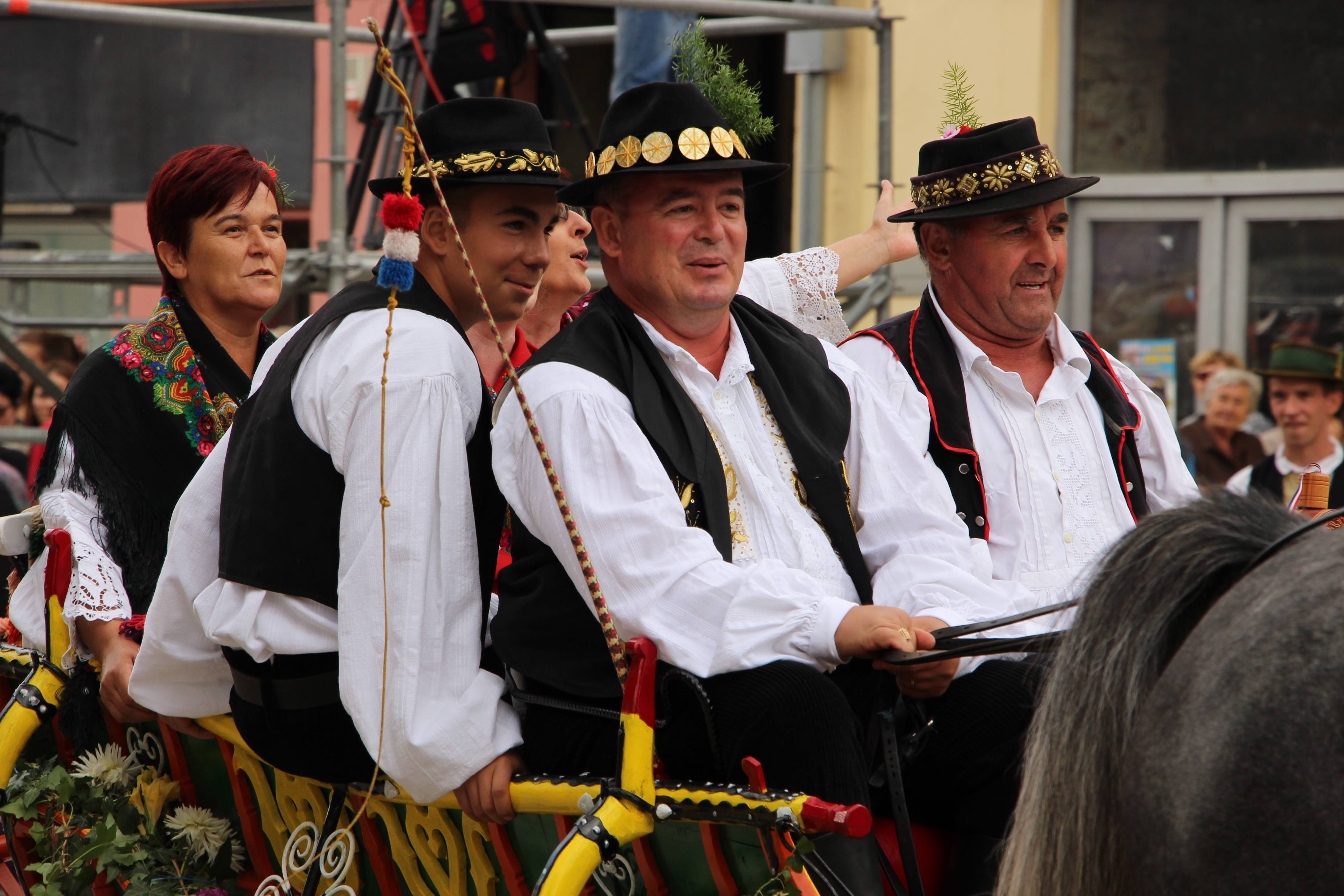
The 55th Vinkovačke Jeseni is going to look very different to previous editions,. But its colourful costumes, wonderful dancing, great music and preservation of Croatian culture can still be enjoyed by all. Only this year, you'll be enjoying it on TV.
Instead of inviting visits by hundreds of folklore societies (KUDs) from across Croatia, for the 55th Vinkovačke Jeseni, the event has visited them. From August 27 to September 4, a special film crew visited all of the counties in the country and made short films with local KUDs about the traditions, culture and customs of each region. These will be shown as video postcards at the ceremonial parade. Made by Plave Vinkovačke televizije (Blue Vinkovci Television), they will also be available for anyone to watch internationally until September 20.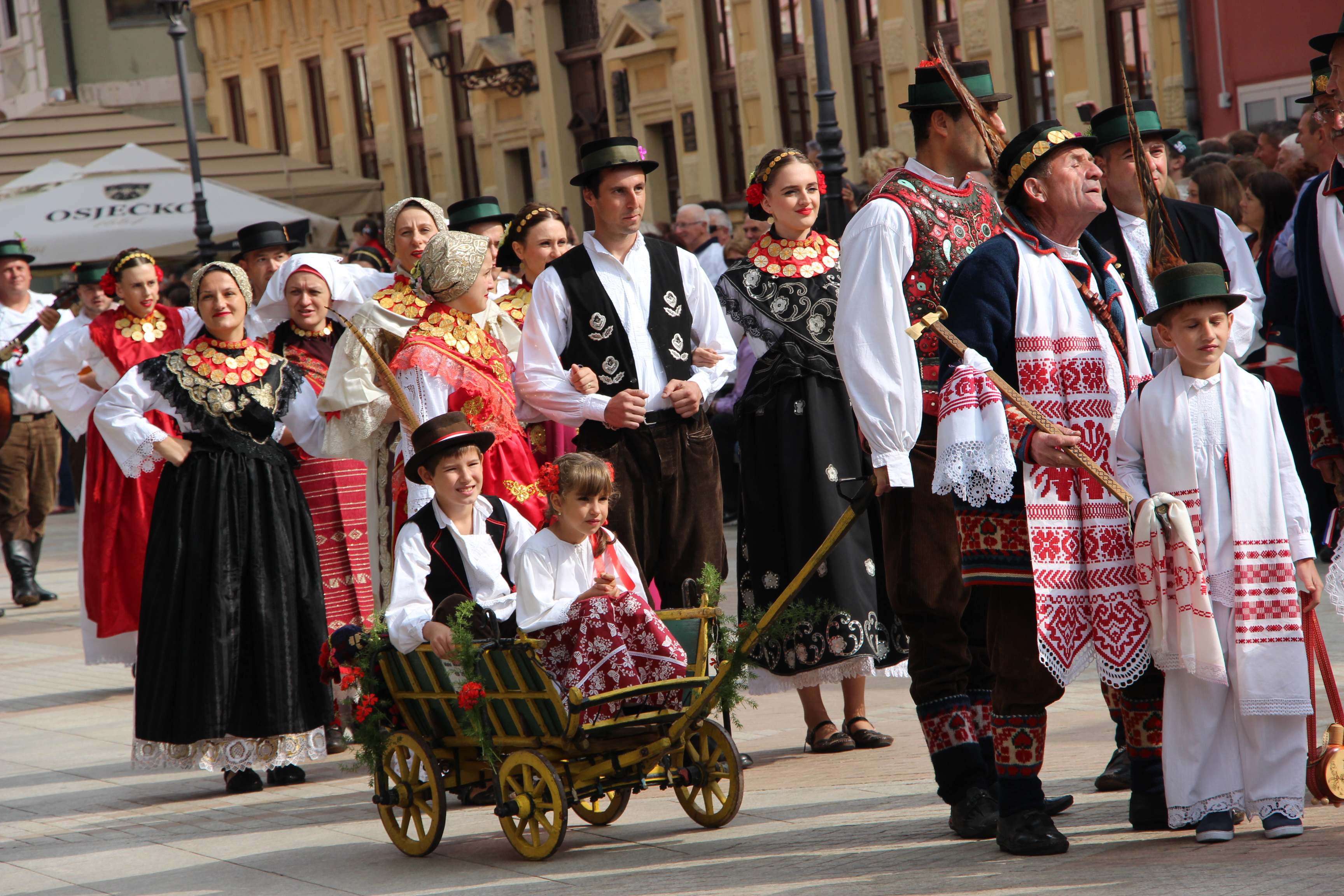
The physical event in Vinkovci will still have its traditional parade of participants, and horse-drawn carriages will still parade through the town, although this year there will only be around 30 KUDs from the wider Vukovar-Srijem County in attendance. The opening event will take place on the main square and this year there will be no large tent for nighttime revelry.
All photos from previous editions of Vinkovci Autumns © Vinkovačke Jeseni
For the latest travel info, bookmark our main travel info article, which is updated daily.
Read the Croatian Travel Update in your language - now available in 24 languages
Vinkovci Autumn (Vinkovačke Jeseni) - A Look Behind The Scenes
This past weekend was one of the best annual events for Vinkovci, being the 54th anniversary of Vinkovci Autumn, which showcases some of the best Slavonia has to offer. This past weekend Total Croatia News' James MacDonald was there and had a chance to see behind the scenes and find some of the hot spots to eat in Vinkovci.
The fact that Vinkovci is commonly referred to as the “oldest town in Europe” really took on its significance over these past ten days as the community pulled together putting on the incredible event. It has been a fantastic week for the annual event as thousands of people were drawn out to the festivities. This event is said to have boasted more than 8,000 performers who took part in its 54th anniversary. To see it in person for many was a spectacular event - witnessing Croatian tradition come to life.
The feeling of autumn was definitely in the air with the yellow and orange leaves falling. The bright colours of autumn filled the streets with pastel orange and yellow under the blue Croatian sky. There was the midway of carnival rides, plenty of shopping, arts and crafts, gastronomy and beverages, marathons, concerts, musical performances, plays, parades, and much more. It is almost impossible to write everything and see everything that happened during this magical festival.
There’s always room for more great Slavonian dishes to try...
When attending such an event it is near impossible to resist the smell of freshly cooked Čobanac, fish paprikaš and more. The sight of fish cooking over the open wood fire pits and the black kettles is just one sign that you know you’re in Slavonia. The region is known for cooking with paprika, a rich crimson red spice that is put into most of the gastronomic dishes and is to be savoured. It was a great way to experience some dishes you may have not tried before.
Music could be found playing everywhere in Vinkovci as night fell.
There was plenty of entertainment throughout the city as tamburitza bands sang and performed walking the streets playing their beloved songs. In the café bars were thousands of people soaking up the sounds of continental Croatia while gathered with friends and family. There was that ambient feeling of nostalgia as if time had stopped and our everyday problems disappeared amongst the people.
A chance to see how Croats get ready for this big cultural event.
The event really helped celebrate the rich history, culture and tradition for many Croats. It was also a great opportunity to share and introduce Croatian culture to younger generations who got to experience and be part of their family’s rich cultural heritage. Vinkovci was definitely the place to be if you wanted to see many different Croatian customs all in one place. Each region has its own specific style and clothing that represents generations upon generations, continuing its rich cultural legacy.
The autumn festival brought together some of the most elegant Croatian clothing to be seen. The bright glittering golden “dukats” were adorned by the ladies that had been passed down through many generations in the same family for years. The ''dukats'' are more than just decoration, but are symbols of wealth and prosperity (and the history of that in itself would be a completely different article).
Each region has its own style of embroidered clothing and choice of colours to represent the area as well as their family heritage. In some garments, the patterns are very sophisticated with great attention paid to the details.
The men also took part in the tradition of wearing clothing which dated back to their grandfathers and now deceased relatives. The men’s attire was paired to the women’s clothing in terms of style associated with the region they were from. The men were adorned with different tailored jackets, trousers and hats that took many visitors back to their very own ancestors.
It was also a chance to see how the crew gets ready for their big TV performance...
With the sun setting during the golden hour, the streets became more alive, drawing more and more crowds to the centre stage. The dress rehearsals slowly began and one could feel the energy of excitement in Vinkovci. To be there and watch the piece together was one of those precious moments in life as the performers set about their final preparations for the evening show. The side streets were full of performers wearing all sorts of bright coloured clothing as they waited patiently to be called to the stage.
Watching the pre-show, one could see how the performers were hooked up to wireless microphones, then the difficult part of having the performers know their mark on the stage for camera shoots, while the traditional dancers paraded around the stage. It was truly a rare opportunity to see the piece come together for those that attended the event.
The organisers waved their hands in the air like conductors to direct the crew and stagehands to engage in last-minute adjustments. The director carefully prepared for hours in making sure that the presentation of the event would go smoothly for the live broadcast on Croatian TV. Everything went perfectly when adjusting everything from floodlighting and stage direction.
It's necessary to give a special thanks to everyone who took the time to make the annual Vinkovci Autumn such a memorable event that draws thousands of people back to Vinkovci every year. Without their tireless efforts, the festival would not be the success that it has become known as in the usually overlooked Eastern Croatian region of Slavonia.
Much appreciation goes out to the many volunteers, organisers, and sponsors and of course to the Municipality of Vinkovci. Congratulations to another successful year thas brought people together in this one of a kind place known as Vinkovci - The oldest town in Europe.
Make sure to follow our dedicated lifestyle page for much more.
53rd Vinkovci Autumn Festival Starts
ZAGREB, September 15, 2018 - The 53rd edition of the Vinkovci Autumn Festival started in the eastern Croatian town on Friday evening with a folklore event called "Pregršt Istine" presenting 57 cultural clubs from the eastern Vukovar-Srijem County which will be staging performances in the next five days.
Vinkovci Autumns: Incredible Heritage of Slavonia (Photos)
The 52nd edition of the largest folk festival in Slavonia brought a smile to everyone's faces


